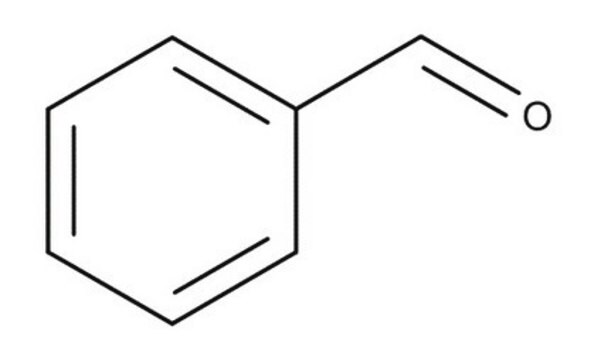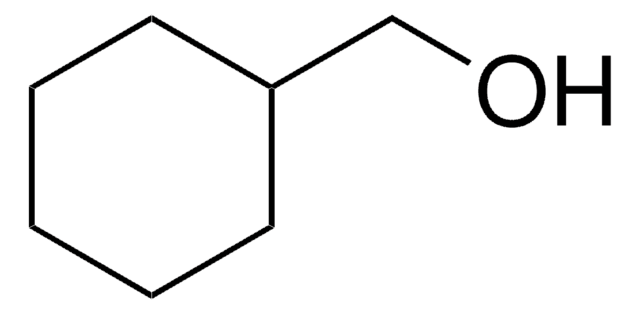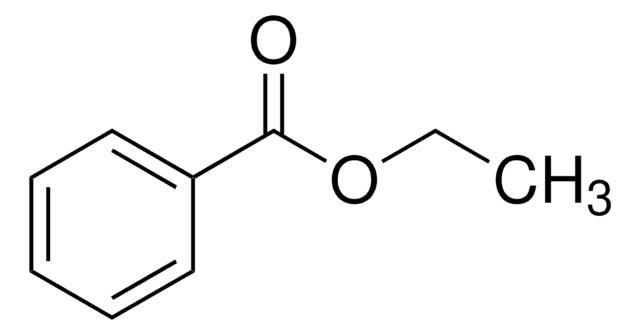PHR1203
Benzaldehyde
Pharmaceutical Secondary Standard; Certified Reference Material
Sinónimos:
Bitter almond
About This Item
Productos recomendados
grado
certified reference material
pharmaceutical secondary standard
Nivel de calidad
Agency
traceable to USP 1050905
densidad de vapor
3.7 (vs air)
presión de vapor
4 mmHg ( 45 °C)
familia API
benzaldehyde
temp. de autoignición
374 °F
lim. expl.
1.4 %, 20 °F
condiciones de almacenamiento
protect from light
técnicas
HPLC: suitable
gas chromatography (GC): suitable
índice de refracción
n20/D 1.545 (lit.)
bp
178-179 °C (lit.)
mp
−26 °C (lit.)
densidad
1.044 g/cm3 at 20 °C (lit.)
aplicaciones
cleaning products
cosmetics
flavors and fragrances
food and beverages
personal care
pharmaceutical (small molecule)
formato
neat
temp. de almacenamiento
2-30°C
cadena SMILES
O=Cc1ccccc1
InChI
1S/C7H6O/c8-6-7-4-2-1-3-5-7/h1-6H
Clave InChI
HUMNYLRZRPPJDN-UHFFFAOYSA-N
¿Está buscando productos similares? Visita Guía de comparación de productos
Descripción general
Benzaldehyde is an important flavoring agent after vanillin. It is usually liberated from a cyanogenic glycoside such as amygladin, which is found in fruit kernels.
Aplicación
Nota de análisis
Otras notas
Nota al pie de página
Productos recomendados
Producto relacionado
Palabra de señalización
Danger
Frases de peligro
Clasificaciones de peligro
Acute Tox. 4 Inhalation - Acute Tox. 4 Oral - Aquatic Chronic 2 - Eye Irrit. 2 - Repr. 1B - Skin Irrit. 2 - STOT SE 3
Órganos de actuación
Respiratory system
Código de clase de almacenamiento
6.1C - Combustible acute toxic Cat.3 / toxic compounds or compounds which causing chronic effects
Clase de riesgo para el agua (WGK)
WGK 1
Punto de inflamabilidad (°F)
145.4 °F - closed cup
Punto de inflamabilidad (°C)
63 °C - closed cup
Elija entre una de las versiones más recientes:
Certificados de análisis (COA)
¿No ve la versión correcta?
Si necesita una versión concreta, puede buscar un certificado específico por el número de lote.
¿Ya tiene este producto?
Encuentre la documentación para los productos que ha comprado recientemente en la Biblioteca de documentos.
Los clientes también vieron
Protocolos
-Tolualdehyde; Valeraldehyde; Isovaleraldehyde
Nuestro equipo de científicos tiene experiencia en todas las áreas de investigación: Ciencias de la vida, Ciencia de los materiales, Síntesis química, Cromatografía, Analítica y muchas otras.
Póngase en contacto con el Servicio técnico












